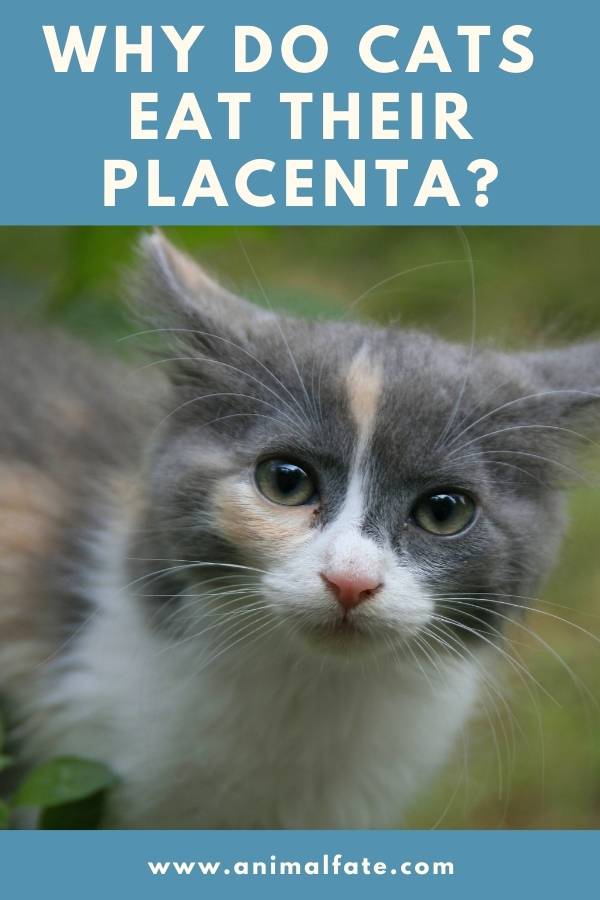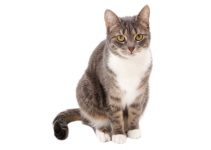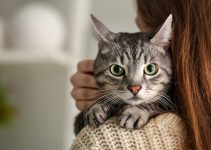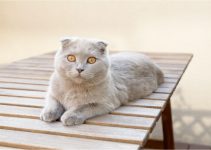Cats eat their placenta because they want to get rid of the evidence of birth (especially the odor) and then because it’s very nutritious. Cats need all possible nutrients after birth to support their kittens. So, that’s the reason why mother cats eat the placenta after birth.
It seems gross in our perspective, but such an act serves a lot of purposes.
For this reason, you may wonder if it’s a normal thing for cats and if you should allow your pet to do so.
Let’s find out more about it.
Contents
Is it normal for cats to eat their placenta?
It is perfectly normal for a cat to eat their placenta right after giving birth. Although it may look gross for us, it serves a purpose for cats. Known as placenthopagia, it benefits them in two ways.
First, it’s their protective instinct.
Cats come from a family of animals who used to live in the wild. Although domestic cats have been living in homes already, some instinct remains.
By eating the placenta, they remove the evidence of birth, particularly the scent.
Felines know their kittens are vulnerable, and they are weak enough to protect them.
Thus, they eat the placenta and licks the blood to remove the scent.
The mother would chew the umbilical cord, severing its attachment from her young. Afterward, it will devour the placenta, then lick the blood of her young.
Not only are they able to remove the scent that can attract predators, but they also clean their young at the same time.
Although our pets aren’t in danger from any predators, they may eat it out of instinct.
Second, placentas are nutritious for them.
Mother cats tend to get weak after giving birth. At the same time, they need the energy to care for and protect their young.
Thus, mother felines tend to be at their weakest point after birth, and they need nutrition more than ever to sustain their young.
By eating a placenta, they get the nutrients they need to produce milk and the energy to nurse their young.
Further, they don’t need to forage for food, and they can stay with their young without having to seek food.
Now, how many placentas do cats have?
Related – Why does my cat keep bringing me her kittens?
How many placentas do cats have?
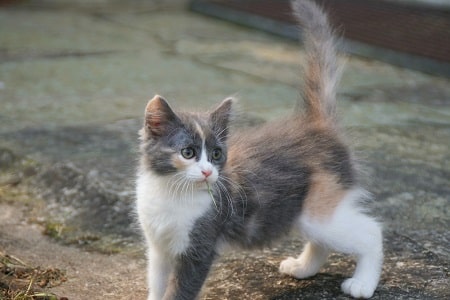
The number of placentae depends on the number of kittens she carries.
Generally, a kitten should have its placenta. Thus, if your cat has four kittens, you should expect four placentas as well.
Upon giving birth, you may see each placenta attached to a kitten through an umbilical cord.
A mother cat who would eat the placenta would chew the cord first.
Doing so would sever the connection between the placenta and her kitten.
A cat may find it hard to sever the attachment, but they would be able to do so after a while.
If you think your pet can’t do it, you can aid it by cutting the cord yourself.
A gentle reminder, though. Avoid cutting the cord until it is limp, and the placenta is cooling. A pair of scissors would do the job. Cut it two or three centimeters away from the kitten.
Further, never pull on the cord attached to the kitten. Doing so may cause bleeding or an umbilical hernia.
Don’t worry about having a long stump; it will wither and fall off very soon.
Cut it yourself only when you think it’s necessary. Further, be mindful of your cat’s reaction and do it only when you feel your pet will allow you to.
Now, since a placenta depends on kittens, you may think they’d have to eat so much if they have many kittens.
Let’s get into it.
You May Also Read – Why does my cat keep moving her kittens?
How many placentas can a cat eat?
Birthing in cats usually consists of four to five kittens. However, a cat can give birth up to 12 kittens.
With so many kittens, it also means there are so many placentas for cats to eat.
Although placentas are beneficial in the health of a mother cat, overeating will also be harmful.
It’s ideal for cats to eat until four placentas. Any more than that can cause diarrhea and other digestive issues.
Thus, if you see your cat having more than four kittens, it’s best to watch out for your cat. Prevent it from eating more than four placentas.
Do you want to know if cats love their kittens? Read here.
Why isn’t my cat eating the placenta?
If your cat isn’t eating the placenta, it’s alright.
The reason why your pet may not eat her placenta is that it’s her first time giving birth, and she has no idea about it.
If it’s your pet’s first birthing, she may skip a few of the typical methods.
Moreover, your cat may not contain the placenta because she already feels safe and that there’s no need to eat it.
At the same time, your pet may not feel the need to eat it.
Don’t worry, though. It’s alright for felines not to eat their placenta.
However, since your pet isn’t eating the placenta, she needs nutrition for her young.
Thus, try to offer some nutritious food for her. At the same time, dispose of the placenta and maintain cleanliness in the litter.
Provide a cozy place for your cat and her young. It will help her feel more comfortable while caring for her kittens.
Do you want to know if cats remember their mothers? Learn more here.
What do you do with a cat’s placenta?
If your cat isn’t eating the placenta, it’s best to dispose of it once your cat has severed its attachment.
Your pet may have its reasons why she won’t eat it, and it’s alright.
However, if she’s not eating it, it can create a mess if you leave it there.
Since we can’t aid the birthing process, we can help our pets by making them comfortable.
Please keep your pet’s environment safe for her. Maintain its warmth and give her some cloth to put her kittens.
Do you have a pregnant 1-year-old cat? How many kittens will she have? Read here.
Summary
It is a normal thing for cats to eat their placenta after giving birth. While it looks gross for us, it serves many purposes for our pets.
Whatever the case, we can all agree that birthing is one of our pets’ stages where they need our aid and care.
Although we can’t help the process itself, we can help our pets by giving them the comfort they can get.
Resources
ScienceDirect about Placentophagia
Image credits – Photos by Laura Lugaresi on Unsplash
